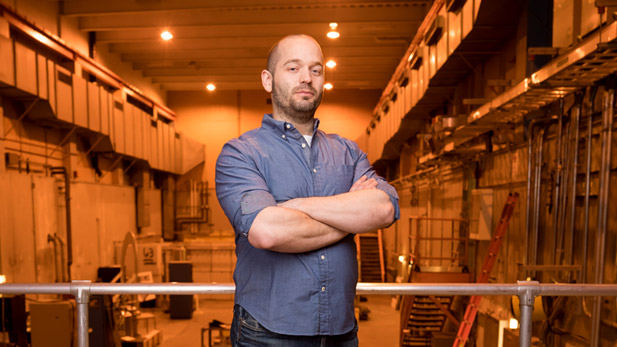Alumnus Dan Brunner Tapping into Electromagnetic Advances for Fusion Energy

Daniel Brunner and colleagues from Massachusetts Institute of Technology’s Plasma Science and Fusion Center have formed Commonwealth Fusion Systems to develop rapid, staged research that could lead to a new generation of fusion experiments.
Fusion energy is on the cusp of becoming reality and thanks to emerging technological advances, the inexhaustible and zero-carbon source of energy could be a part of the U.S. power grid within the next 10 to 20 years.
Fusion is the natural process that powers the sun and stars. In fusion power plants, the fuel is a form of hydrogen, found in water, which is so abundant as to create a virtually endless supply. The power is produced when the hydrogen atoms fuse together to form heavier elements, such as helium. Fusion has been the goal of physicists and scientists for centuries, and has been challenging to accomplish on Earth because it requires control of a 200-million-degree Celsius plasma that produces energy. The main problem has been to get plasmas within a small-scale, power plant-type environment to generate more energy than it takes to run them.
Enter 2008 engineering physics alumnus Daniel Brunner and colleagues from Massachusetts Institute of Technology’s Plasma Science and Fusion Center. They have formed a new private company, Commonwealth Fusion Systems, to develop rapid, staged research that could lead to a new generation of fusion experiments based on advances in high-temperature superconductors.
To get around this obstacle, Brunner, who earned a PhD in physics from MIT in 2013, is working on producing new superconducting magnets that will produce much higher magnetic fields, which will enable smaller, more economical fusion devices and more rapid-learning cycles. The electromagnets will hold the hot plasma in place.
After an anticipated timeline of three years for that phase, they’ll then begin working to build a compact device using those strong magnets. This should enable them to demonstrate the first net energy generation from controlled fusion capable of producing around 100 million watts, or 100 megawatts.
“If all goes according to our plans, meeting key technical milestones, we’ll be able to achieve a full-scale prototype of a fusion power plant that could set the world on a path to low-carbon energy,” Brunner says.
If widely disseminated, such fusion power plants could meet a substantial fraction of the world’s growing energy needs while substantially curbing greenhouse gas emissions that are causing global climate change.
One of Brunner’s MIT colleagues calls the results of current electromagnets a “sort of a Kitty Hawk moment for fusion.”
Brunner agrees, stating “these are exciting times for fusion research and science that could substantially impact mankind. That’s why I and others got into physics.”